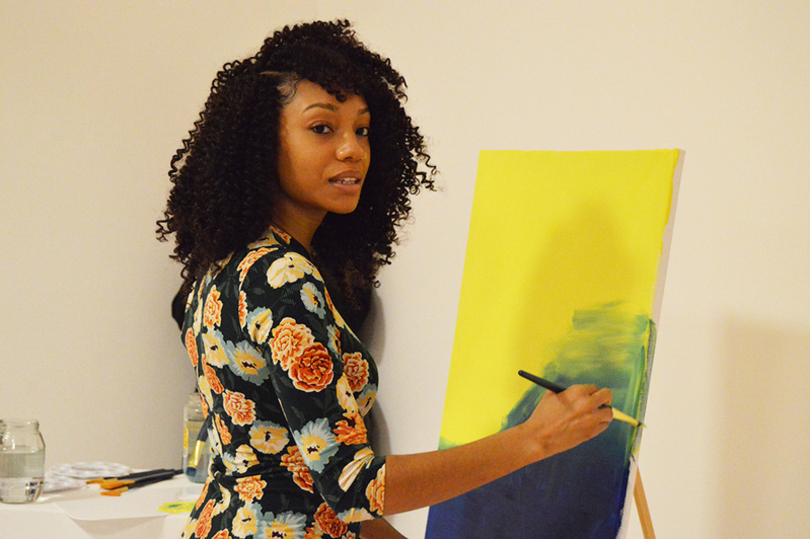Celebrate Women’s History Month by exploring Stultz’s paintings

Spencer Stultz, a master’s degree candidate in Syracuse University’s Pan African studies department, will have her one-woman exhibition, “A Time for Joy and a Time for Sorrow,” on display at the Community Folk Art Center through March 23. Haley Robertson | Feature Editor
March is Women’s History Month, and one of the many ways you can celebrate women is by visiting the Community Folk Art Center, where Syracuse University alumna Spencer Stultz’s one-woman exhibit is being showcased until Saturday.
Titled “A Time for Joy and a Time for Sorrow,” Stultz’s paintings are a portrayal of identity, spirituality and womanhood. The combination of these concepts outlines her experience as a young African-American woman.
When women make art, we are treated to their extraordinary take on life. The images we see in media are often men-driven — now’s the time to appreciate women artists for sharing unique perspectives.
“It’s crucial for women to make art about women; no one understands our complex lives the way that we do,” said Allison Sklaney, an instructor of illustration in SU’s College of Visual and Performing Art’s School of Art, in an email.

Susie Teuscher | Digital Design Editor
The Community Folk Art Center is known for supporting artists of marginalized backgrounds, including women. It’s important that these artists have an outlet to share their work. Mainstream art has often neglected the perspective of minorities.
“Art offers insight into the world of others. Within moments we can feel as the subject feels, and in that way experience their truth. Only by free artistic expression of ourselves and others can we break apart what is holding us back from the truth,” Sklaney said.
Art is a means of promoting social change. An artist’s personal experience shines through their work and equips us with a new understanding of the world.
Seeing women create art that expresses their life experiences encourages others to do the same, while fostering respect for those experiences. For young girls seeking healthy forms of self-expression, art as a creative process can be an effective way for them to do just that.
“To view an image of a woman — whether a painting, photograph or sculpture — as a woman, we sense on a deep level a solidarity, an understanding of her life situation. And while we hold a union in our basic humanity, each person has a story to tell that is unique, that can offer enlightenment to others. As similar as we are, we are often blind to the bias that we hold against each other. Our quick judgement, often without much thought, should be questioned, and as women we should hold each other accountable,” Sklaney said.
Take this opportunity to appreciate art as a representation of womanhood. You may leave with an eye-opening lesson of what it truly means to be a strong woman.
Jennifer Bancamper is an English and textual studies and writing and rhetoric double major. Her column appears bi-weekly. She can be reached at jbancamp@syr.edu.





